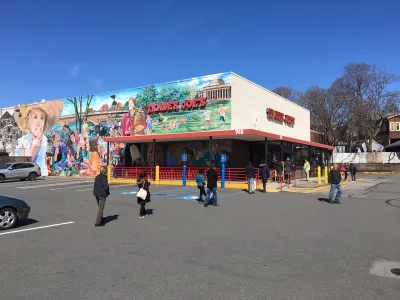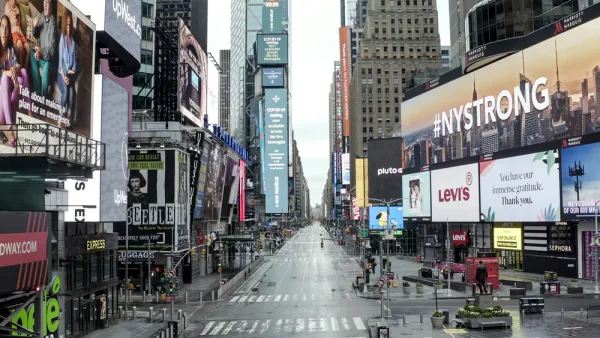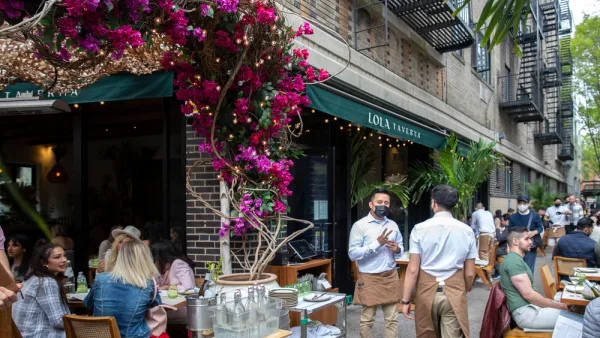Cities could learn from the grocery store chain's successful navigation of the uncertainty of the COVID-19 pandemic.

The pandemic has thrown the benefits of urban density into doubt as recently untethered work-from-home employees flee city centers, driven by fear of COVID-19, lack of the usual draws like nightclubs and restaurants, and lower costs of living elsewhere. As people hunker down at home and grocery stores become major sites of outbreaks, one grocery chain has managed to implement low-cost but wildly effective measures to keep its employees safe and its sales at pre-pandemic levels. According to Nate Cherry, Trader Joe's has managed to "incentivize the right, community-oriented behaviors" using "functional problem-solving, practical solutions, better data mining and analysis, and more flexibility" that have helped the popular chain thrive during the pandemic.
Trader Joe's,with an employee infection rate of 2.4% (far below the 20% averaged by other grocery stores) has implemented small but powerful changes that offer valuable lessons for cities. As a hyper-local amenity, their stores mainly serve users that live within on or two miles, reducing customers' reliance on transportation for basic necessities—a worthy goal for neighborhoods and a cornerstone of the recent "15-minute city" movement. The store also provides an excellent example of space management in their parking lots. "Similarly, one of the easiest things we can do as planners is to more intelligently manage the infrastructure we have — specifically, sidewalks, which can be better structured to accommodate passive and active areas, as well as seating and landscape areas." Other tools that would be useful anywhere include sanitation infrastructure(in the case of Trader Joe's, visible hand-washing stations), attention to proper ventilation, and a flexibility to implement temporary solutions quickly and cost-effectively.
Planners must look for the opportunities and tweaks that will allow us to resume urban life with all the things we love about it more safely and equitably. "Our cities of tomorrow might be much like the ones of today, just a bit less crowded, with access to more resources and managed with greater responsiveness — like your favorite grocery store."
FULL STORY: 5 lessons Trader Joe’s can teach the city of the future

National Parks Layoffs Will Cause Communities to Lose Billions
Thousands of essential park workers were laid off this week, just before the busy spring break season.

Retro-silient?: America’s First “Eco-burb,” The Woodlands Turns 50
A master-planned community north of Houston offers lessons on green infrastructure and resilient design, but falls short of its founder’s lofty affordability and walkability goals.

Delivering for America Plan Will Downgrade Mail Service in at Least 49.5 Percent of Zip Codes
Republican and Democrat lawmakers criticize the plan for its disproportionate negative impact on rural communities.

Test News Post 1
This is a summary

Test News Headline 46
Test for the image on the front page.

Balancing Bombs and Butterflies: How the National Guard Protects a Rare Species
The National Guard at Fort Indiantown Gap uses GIS technology and land management strategies to balance military training with conservation efforts, ensuring the survival of the rare eastern regal fritillary butterfly.
Urban Design for Planners 1: Software Tools
This six-course series explores essential urban design concepts using open source software and equips planners with the tools they need to participate fully in the urban design process.
Planning for Universal Design
Learn the tools for implementing Universal Design in planning regulations.
EMC Planning Group, Inc.
Planetizen
Planetizen
Mpact (formerly Rail~Volution)
Great Falls Development Authority, Inc.
HUDs Office of Policy Development and Research
NYU Wagner Graduate School of Public Service





























